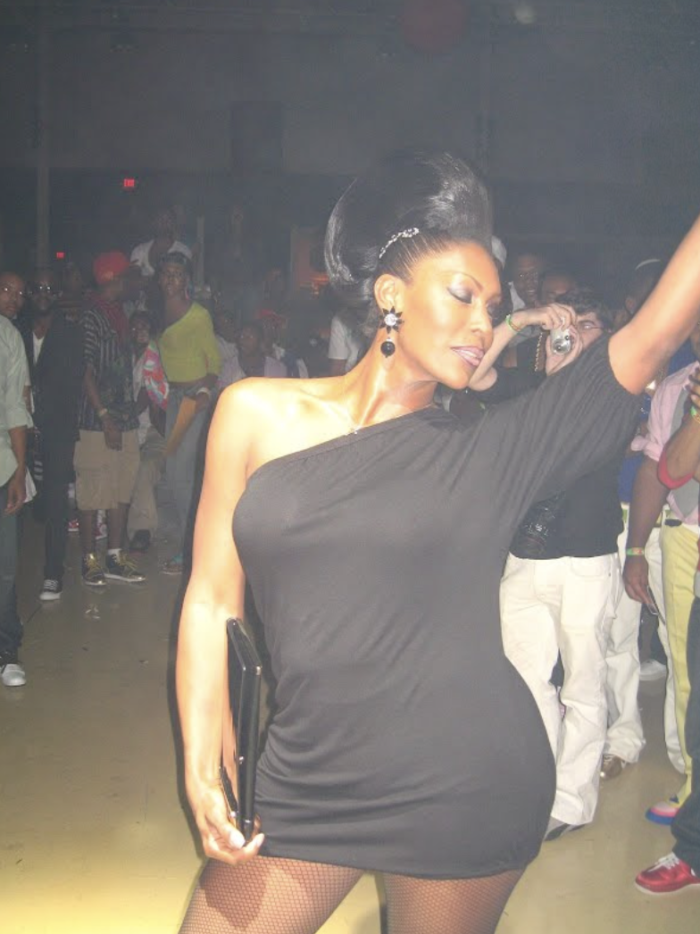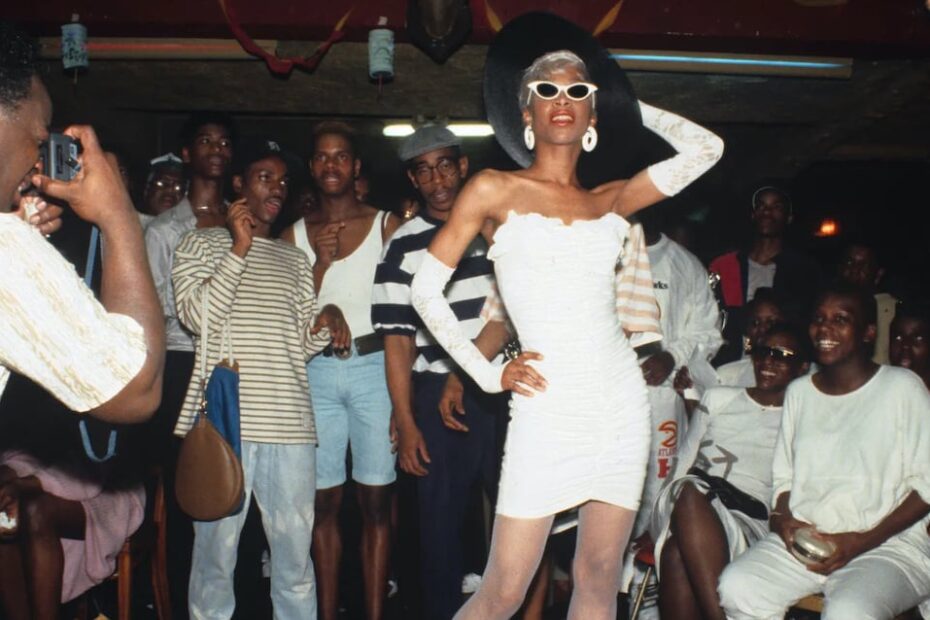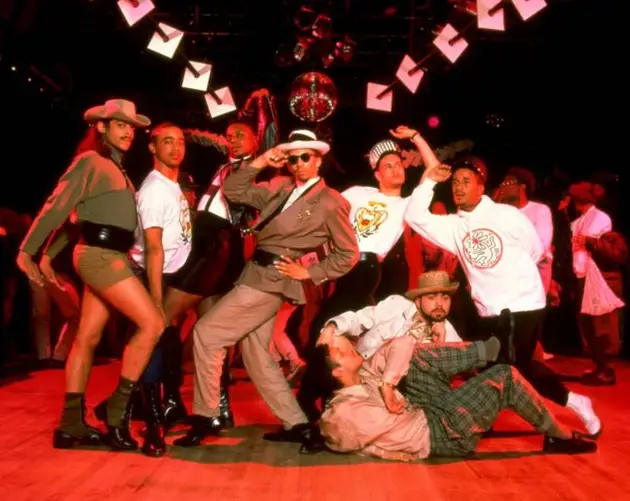In the 1960s and 1970s, the modern ballroom subculture exploded across New York City, offering queer Black and Latino communities a welcoming space to express themselves.
In 1967, a Black drag queen named Crystal LaBeija lost a competition at the Miss All-America Camp Beauty Pageant. In a famous scene shown in the documentary The Queen (1968), she furiously laments that she only lost because of her race, snapping: “I have the right to show my color, darling.” LaBeija felt that there wasn’t room for her in white queer spaces — so she created her own. And with that, modern ballroom culture was born.
Though drag competitions had existed in one form or another for over a century, LaBeija established the first modern ballroom house in New York City, the House of LaBeija, inviting other people of color to attend elaborate “balls” and compete in different categories. Soon, many other houses followed, hosting balls of their own.
During these balls, the members of different house “families” would dress up and compete for prizes in various categories, seeking to out-pose each other. Not only did this create an electric cultural scene in cities across the country, but ballroom culture provided a home for marginalized people and a way for them to express themselves.
In the gallery below, look through photos that capture the ballroom scene:
And read on to learn about how ballroom developed, how it expanded, and where it is today.
The Early Roots Of Ballroom Culture
Though the modern ballroom scene took off in the 1970s, its roots go back much farther. Before the Civil War, enslaved Black people would sometimes pantomime white slaveholders at balls, creating exaggerated dance movements as a subtle form of resistance.
After the war, in the 1860s, the Hamilton Lodge No. 710 in Harlem began throwing a charity masquerade gala called the Annual Odd Fellows Ball, which featured performers in drag who competed for prizes. According to Rolling Stone, one 1886 New York paper called it “the event of the season.” Thousands of people were turned away from the 1929 ball, and the 1936 ball drew a crowd of 8,000.
In his autobiography, Langston Hughes described these events as the “strangest and gaudiest of Harlem spectacles.” Hughes described how the balls featured “males in flowing gowns and feathered headdresses and females in tuxedoes [sic] and box-back suits.”
The balls provided an interracial space for drag queens, gay people, and other gender nonconforming people to embrace their identities. But they also drew scrutiny from New York authorities. In 1937, the District Attorney of the City of New York stepped in and shut down the Hamilton Lodge Ball.
Still, drag pageants continued on elsewhere. And it was at a drag competition called the Miss All-America Camp Beauty Pageant in 1967 that Crystal LaBeija famously decided to create a ballroom scene for people of color.
Houses, Mothers, And Voguing


Junior LaBeija/Google Arts and CultureCrystal LaBeija, who established the first “house,” in 1977.
Crystal LaBeija believed she’d been robbed of victory at the Miss All-America Camp Beauty Pageant. She believed it was because she was Black. So, she and a fellow drag queen named Lottie LaBeija decided to form a house — House LaBeija — and throw their own balls.
Not only did their house — and the ones that followed — create a space for queer people of color who felt excluded or devalued in other spaces, but it also offered something of a surrogate family. Each house had a “mother” who took care of the “children” under her wing.
“A mother is one who raises a child, not one who borns it,” Hector Xtravaganza, a “child” of House Xtravaganza, told The New York Times in 1993 after the death of the house’s mother, Angie Xtravaganza.


Chantal RegnaultHouse mother Angie Xtravaganza at the House of Richards Ball. 1992.
As the paper explained, house mothers like Angie took in “rejected, wayward, even homeless children… [they] fed them, observed their birthdays, taught them all about ‘walking the balls.'”
These balls were put on by the different houses in a bid to outdo each other. They included competitions with categories like “Female Figure Realness,” “Butch Queen,” and “Face.” And they eventually led to the birth of “voguing.”
“It all started at an after-hours club called Footsteps on 2nd Avenue and 14th Street,” David DePino, a DJ at Paradise Garage, recalled in Voguing and the House Ballroom Scene of New York 1989-92 by photographer Chantal Regnault. “Paris Dupree was there and a bunch of these Black queens were throwing shade at each other. Paris had a Vogue magazine in her bag, and while she was dancing she took it out, opened it up to a page where a model was posing, and then stopped in that pose on the beat.”


Chantal RegnaultEvie Pendavis Milan striking a pose at the House of Omni Ball. 1989.
DePino continued: “Then she turned to the next page and stopped in the new pose, again on the beat. Another queen came up and did another pose in front of Paris, and then Paris went in front of her and did another pose. This was all shade — they were trying to make a prettier pose than each other — and it soon caught on at the balls. At first they called it posing and then, because it started from Vogue magazine, they called it voguing.”
Though ballroom culture started as an underground scene, it got a huge publicity boost with the release of the documentary Paris Is Burning (1991). The documentary became an “encyclopedia” for ballroom culture, according to Rolling Stone, though it was also critiqued for exploiting the ballroom community to entertain white audiences — and because many of the performers claimed they were not fairly compensated by the director, Jennie Livingston.
This, and Madonna’s song “Vogue,” helped make ballroom mainstream. So what is the scene like today?
The Ballroom Scene Today


Frank Garcon/Google Arts and CultureRaquel Balenciaga at the House of Balenciaga Ball. 2007.
At the same time that documentaries and songs brought ballroom to the forefront of popular culture, the ballroom community was facing its greatest and most deadly challenge yet: the HIV/AIDS pandemic. Many of the community’s most prominent members, like house mother Angie Xtravaganza, perished from the disease at a young age.
That said, ball culture lives on today. Not only is it represented on television shows like Pose, but ballroom competitions are still held all over the world.
Take a look at the fascinating history of ball culture in the gallery above.
After reading about the history of ballroom culture, discover Soul Train’s impact on American culture through this gallery of stunning images. Or, travel back in time to the disco era with these photos from the vibrant disco scene.

